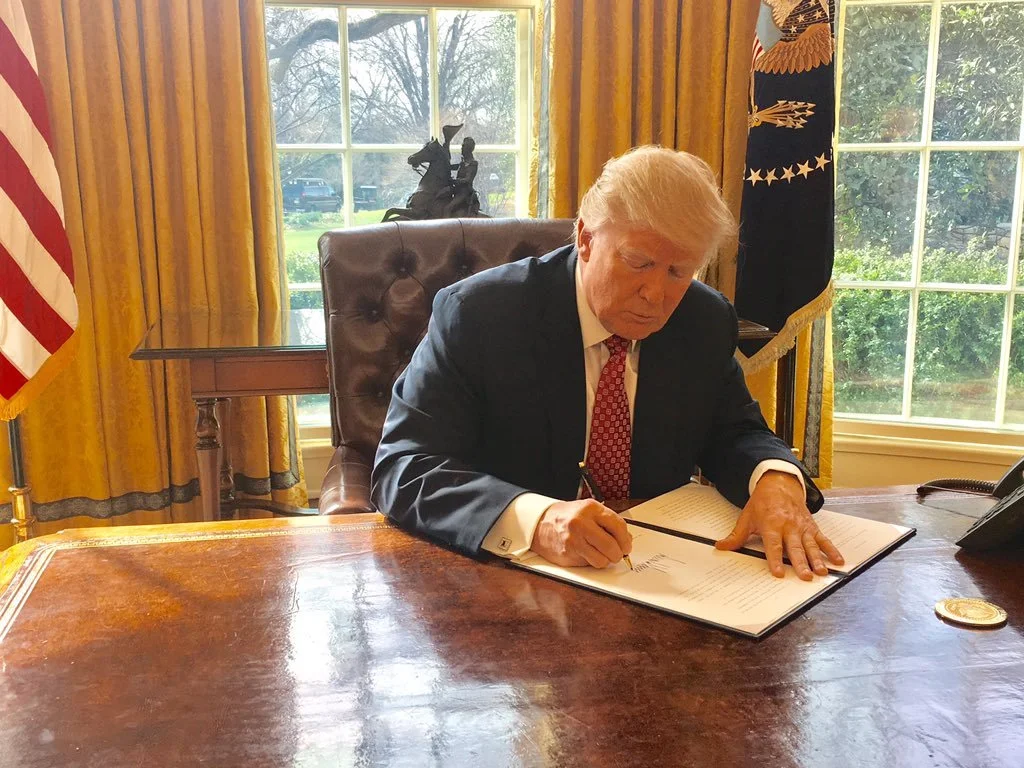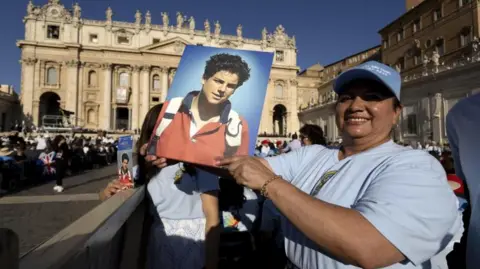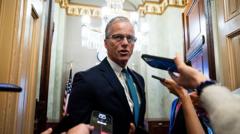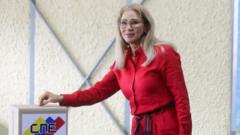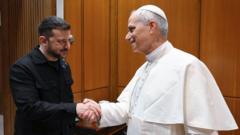In a dramatic unfolding at the Vatican, the conclave tasked with electing the successor to the late Pope Francis has entered its second day, with the 133 voting cardinals reassembling in the Sistine Chapel. After a fruitless first day of voting, when unanimity proved elusive, the cardinals recommence their deliberations, concealed from modern technology and the outside world, under oaths of confidentiality.
Pope Francis' passing in April catalyzed this significant conclave, marking a pivotal moment for the Catholic Church, home to approximately 1.4 billion followers. The cardinals are obliged to secure a two-thirds majority before a new pope can emerge, making this conclave particularly impactful and laden with expectation.
The complexities of this conclave extend beyond the voting chamber; they reflect a broader context marked by financial strife and ongoing issues surrounding past clerical sexual abuse scandals. As they gather, the cardinals grapple with differing ideologies shaped by their diverse experiences. This conclave marks an unprecedented convergence of figures appointed under Francis, many of whom meet one another for the first time. Experts anticipate that the unfamiliarity among the cardinals may lead to more fragmented discussions and potential delays in decision-making.
The rules of engagement are meticulously defined. Apart from the initial single vote on Wednesday, the cardinals will cast up to four ballots daily until enough support rallies around a candidate. The voting results are signaled through the burning of ballots; black smoke indicates no decision, whereas white smoke reveals a newly elected pope. Despite no formal timeline for the conclave, history suggests a wide variance in duration — from mere hours to several months, albeit recent elections have been concluded rapidly, typically within two days.
Noteworthy potential candidates are emerging amidst this historical backdrop. Among the top contenders are Cardinal Pietro Parolin of Italy, who has served as Francis’ deputy, and Cardinal Luis Antonio Tagle from the Philippines, a nation experiencing significant growth in Catholicism. The outcome of this election is framed by what might be deemed a referendum on Francis’ legacy. As both progressive and conservative factions vie for influence, the cardinals' choice represents a crossroad for the Church's future trajectory.
Adding to the heightened interest in the process, the conclave adheres to a stringent secrecy protocol — no modern communication tools are permitted, and extensive safeguards are in place against any unauthorized disclosures. With this election or any challenges that arise during the process closely watched by the global Catholic community, and as cardinals await to return to deliberations, there remains a palpable tension surrounding the paths that lay ahead.
In this historic conclave, the stakes are high, pushing boundaries of tradition and the hopeful future of an institution steeped in both the controversies of its past and the demands of a changing world. As the cardinals gear up for continued voting, the question looms large: who will emerge as the next leader, and what kind of Church will they strive to shape?
Pope Francis' passing in April catalyzed this significant conclave, marking a pivotal moment for the Catholic Church, home to approximately 1.4 billion followers. The cardinals are obliged to secure a two-thirds majority before a new pope can emerge, making this conclave particularly impactful and laden with expectation.
The complexities of this conclave extend beyond the voting chamber; they reflect a broader context marked by financial strife and ongoing issues surrounding past clerical sexual abuse scandals. As they gather, the cardinals grapple with differing ideologies shaped by their diverse experiences. This conclave marks an unprecedented convergence of figures appointed under Francis, many of whom meet one another for the first time. Experts anticipate that the unfamiliarity among the cardinals may lead to more fragmented discussions and potential delays in decision-making.
The rules of engagement are meticulously defined. Apart from the initial single vote on Wednesday, the cardinals will cast up to four ballots daily until enough support rallies around a candidate. The voting results are signaled through the burning of ballots; black smoke indicates no decision, whereas white smoke reveals a newly elected pope. Despite no formal timeline for the conclave, history suggests a wide variance in duration — from mere hours to several months, albeit recent elections have been concluded rapidly, typically within two days.
Noteworthy potential candidates are emerging amidst this historical backdrop. Among the top contenders are Cardinal Pietro Parolin of Italy, who has served as Francis’ deputy, and Cardinal Luis Antonio Tagle from the Philippines, a nation experiencing significant growth in Catholicism. The outcome of this election is framed by what might be deemed a referendum on Francis’ legacy. As both progressive and conservative factions vie for influence, the cardinals' choice represents a crossroad for the Church's future trajectory.
Adding to the heightened interest in the process, the conclave adheres to a stringent secrecy protocol — no modern communication tools are permitted, and extensive safeguards are in place against any unauthorized disclosures. With this election or any challenges that arise during the process closely watched by the global Catholic community, and as cardinals await to return to deliberations, there remains a palpable tension surrounding the paths that lay ahead.
In this historic conclave, the stakes are high, pushing boundaries of tradition and the hopeful future of an institution steeped in both the controversies of its past and the demands of a changing world. As the cardinals gear up for continued voting, the question looms large: who will emerge as the next leader, and what kind of Church will they strive to shape?


